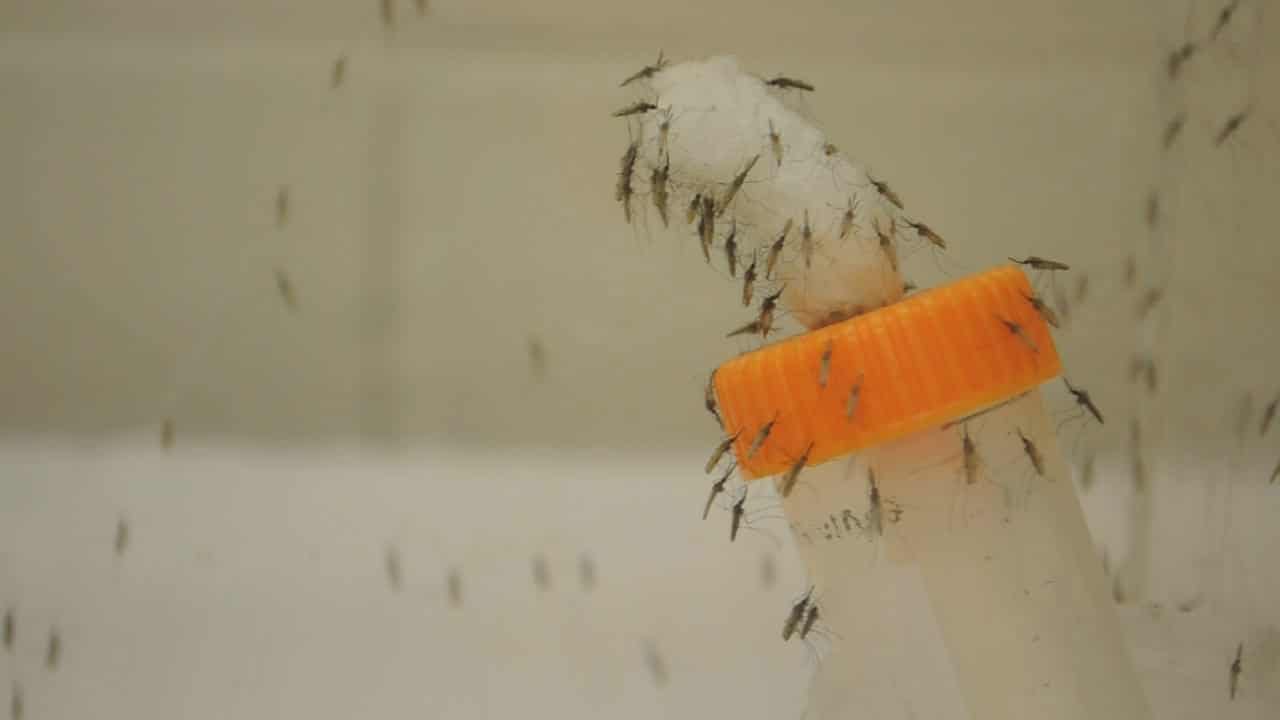
Avoiding mosquitoes to protect against bites is always a good idea. But a new North Carolina State University study shows that the bacteria-ridden exteriors of mosquitoes may be another reason to arm yourself with a swatter.
The first-of-its-kind study, published in PLOS ONE, examined both the exterior surface and interior microbiome of mosquitoes found in homes in Africa’s Cote d’Ivoire – the Ivory Coast.
“When you’re exposed to mosquitoes, you worry about blood feeding,” said R. Michael Roe, William Neal Reynolds Distinguished Professor of Entomology at NC State and co-corresponding author of the study. “Our hypothesis is that mosquitoes can physically transfer bacteria by landing on you or by defecating on household surfaces, like flies do.
“They may not, but no one has studied it before.”
Research collaborators at the Centre Suisse de Recherches Scientifiques collected 79 adult female Anopheles coluzzii mosquitoes from homes in a rice-producing province in Cote d’Ivoire. The mosquitoes were sent to NC State for analysis of the microbiome inside and on external body surfaces.
Some of the findings were surprising.
“We found greater bacterial diversity internally than externally, which didn’t match what has been found with blow flies, for example,” said Loganathan Ponnusamy, an NC State principal research scholar in entomology and co-corresponding author of the paper.
“At the same time, we found lots of external bacterial differences between homes, but not much difference internally between homes, which makes sense. Much of what is found internally relates to nectar or honey consumed as mosquitoes forage outdoors.”
The researchers also found – for the first time in the academic literature – fructobacillus, which is generally found in nectar sources like flowers and beehives, pointing to mosquitoes visiting those plants or nectar sources, said Kaiying Chen, an NC State postdoctoral researcher and first author of the paper.
Perhaps more ominously, the researchers also found large amounts of Staphylococcus and two variants of Rickettsia. The genus of these bacteria are associated with human and animal diseases.
“This is another risk,” Roe said. “Mosquitoes carry bacteria externally and internally and come into your home, possibly transferring pathogenic bacteria.”
The researchers hope to continue the work by exposing mosquitoes to a bacteria that would never be found on human skin and seeing whether the bacteria transfers to an artificial membrane. They then could perform the same test on human arms.
NC State Ph.D. researchers Chouaïbou S. Mouhamadou and Jean M. Deguenon co-authored the paper, as did Behi Kouadio Fodjo, Gba Christabelle Sadia and France Paraudie Kouadio Affoue from the Centre Suisse de Recherches Scientifiques, Abidjan, Cote d’Ivoire, Africa. Funding was provided by a grant from the Department of the Army under a Deployed Warfighter Protection (DWFP) Program Grant W911QY1910003.
-kulikowski-
Note to editors: The abstract of the paper follows.
“Internal and external microbiota of home-caught Anopheles coluzzii (Diptera: Culicidae) from Côte d’Ivoire, Africa: mosquitoes are filthy”
Authors: Kaiying Chen, Loganathan Ponnusamy, Chouaïbou S. Mouhamadou, Jean M. Deguenon and R. Michael Roe, North Carolina State University; Behi Kouadio Fodjo, Gba Christabelle Sadia and France Paraudie Kouadio Affoue, Centre Suisse de Recherches Scientifiques, Abidjan, Cote d’Ivoire, Africa.
Published: Dec. 15, 2022 in PLOS ONE
DOI: 10.1371/journal.pone.0278912
Abstract: Over the past 10 years, studies using high-throughput 16S rRNA gene sequencing have shown that mosquitoes harbor diverse bacterial communities in their digestive system. However, no previous research has examined the total bacteria community inside versus outside of mosquitoes and whether bacteria found on the outside could represent a potential health threat through mechanical transfer. We examined the bacterial community of the external surface and internal body of female Anopheles coluzzii adults collected from homes in Côte d’Ivoire, Africa, by Illumina sequencing of the V3 to V4 region of 16S rRNA gene. Anopheles coluzzii is in the Anopheles gambiae sensu lato (s.l.) species complex and important in the transmission of malaria. The total 16S rRNA reads were assigned to 34 phyla, 73 orders, 325 families, and 700 genera. At the genus level, the most abundant genera inside and outside combined were Bacillus, Staphylococcus, Enterobacter, Corynebacterium, Kocuria, Providencia, and Sphingomonas. Mosquitoes had a greater diversity of bacterial taxa internally compared to the outside. The internal bacterial communities were similar between homes, while the external body samples were significantly different between homes. The bacteria on the external body were associated with plants, human and animal skin, and human and animal infections. Internally, Rickettsia bellii and Rickettsia typhi were found, potentially of importance, since this genus is associated with human diseases. Based on these findings, further research is warranted to assess the potential mechanical transmission of bacteria by mosquitoes moving into homes and the importance of the internal mosquito microbiota in human health.
This post was originally published in NC State News.